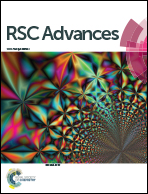Effect of nanoparticles on fibril formation and mechanical performance of olefinic block copolymer (OBC)/polypropylene (PP) microfibrillar composites
Abstract
The morphology and properties of olefin block copolymer (OBC)/polypropylene (PP) microfibrillar composites (MFCs) were tuned by adding nano silica (SiO2) and carbon nanotubes (CNTs) respectively. When the two nanoparticles (NPs) located in the OBC matrix, refined microfibrils were maintained and the final diameters of the PP microfibrils slightly increased compared to the un-modified MFCs; when the NPs located in the dispersed PP component, they exerted a profound impact on the deformation of PP during the fibrillation process. The CNTs can still lead to refined PP microfibrils while addition of SiO2 induces a transition of PP morphology from fibrillar to nodular and even to a spherical structure as its content increases from 0.3 wt% to 1 wt%. The rheological and mechanical properties were also influenced by the type and selective dispersion of NPs. In particular, if the fibrillar morphology of PP was kept in the ternary composites, a small amount of nanoparticles could lead to synergetic enhancement, with polypropylene microfibrils, on the tensile properties of OBC. This work provides a better understanding of the role of NPs in the fiber formation process and an alternative way to control the morphological evolution of MFCs.


 Please wait while we load your content...
Please wait while we load your content...